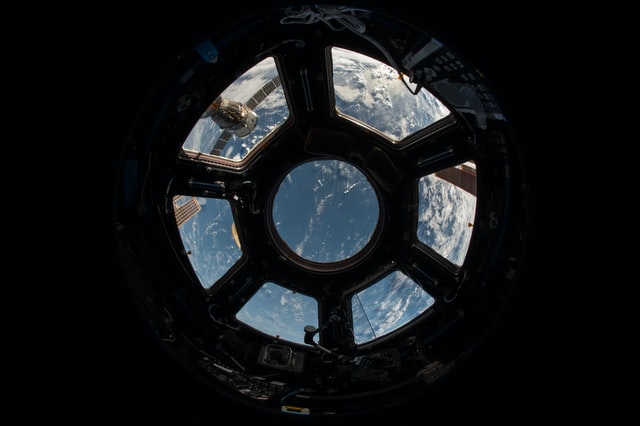The European Space Agency’s exoplanet mission Cheops discovered that an exoplanet orbiting its host star in less than a day has a distorted shape that resembles a rugby ball more than a sphere. This is the first time deformation of an exoplanet has been detected, providing new information about the internal structure of these star-hugging worlds.
The planet, named WASP-103b, is located in the constellation of Hercules. Strong tidal pressures between Earth and its host star WASP-103, 200 degrees hotter and 1.7 times larger than the Sun, have deformed it.
The moon tugs at our globe as it orbits us, causing tides in our oceans. The sun has a small but important influence on the tides, but it is too far away from the earth to produce major deformations. WASP-103b, a planet nearly twice the size of Jupiter at 1.5 times the mass orbiting its parent star in less than a day, cannot say the same. astronomers had hypothesized that such a Proximity to it would result in massive tides, but so far they have not been able to quantify them.
Astronomers have determined how tidal forces are distorting exoplanet WASP-103b from a sphere to a rugby ball shape by combining new data from ESA’s Cheops Space Telescope with data already collected by NASA/ESA’s Hubble Space Telescope and NASA’s Spitzer Space Telescope were, use.
Cheops detect planetary transits, dips in light that occur when a planet passes in front of its star from our perspective. Usually examining the shape of the light curve provides information about the size of the planet. Cheops’ great precision and pointing flexibility, allowing it to return to a target and study multiple transits, allowed astronomers to spot the tidal deformation of WASP-103b’s tiny signal. This unique signature can reveal even more information about the planet.
“Amazingly, Cheops was able to detect such a small deformation,” says Jacques Laskar, co-author of the study and researcher at the Paris Observatory, Université Paris Sciences et Lettres. “This is the first time such an analysis has been conducted. We can only hope that continuing observations over a longer period of time will improve this observation and lead to a deeper understanding of the planet’s basic structure.”
From the transit light curve of WASP-103b, the researchers derived a metric – the Love number – that assesses how mass is distributed on a planet. Understanding how mass is distributed can provide information about the planet’s internal structure.
“A material’s resistance to deformation is determined by its composition,” says Susana Barros, lead author of the study and professor at the Instituto de Astrofsica e Ciências do Espaço and the University of Porto in Portugal. “For example, the moon and sun cause tides on Earth, but we can only see tides in the oceans.” The rocky section doesn’t move much. We can tell how much of the planet is rocky, gaseous, or watery by measuring how much of it is distorted.”
Although WASP-103b has twice the radius, the Love number for WASP-103b is identical to Jupiter, meaning the internal structure is similar.
“A planet 1.5 times the mass of Jupiter should be about the same size,” explains Susana, “but WASP-103b must have swollen enormously due to heating from its star and possibly other reasons.”
“If future observations can confirm the intricacies of its internal structure, we may be able to better understand what causes it to be so inflated.” It will also be useful to know the size of the core of this exoplanet to better understand how it evolved.”
Since the uncertainty of the Love number is still relatively high, future observations with Cheops and the James Webb Space Telescope (Webb) is needed to decode the intricacies. Webb’s exceptional precision will improve planetary tidal deformation data, allowing for a more accurate comparison between these “hot Jupiters” and the major planets of the Solar System.
unusual movement
WASP-103b is equally mysterious. Tidal interactions between a star and a Jupiter-sized planet would normally shorten the planet’s orbital period, bringing it closer to the lead before it is engulfed. On the other hand, the data from WASP-103b seems to indicate thisut that the orbital period is getting longer and the planet is slowly moving away from the star. This would mean that something other than tidal forces is the primary influence on this planet.
Susana and her colleagues considered other possibilities, such as the influence of the host star’s companion on the system’s dynamics or the planet’s slightly elliptical orbit. They couldn’t confirm those possibilities, but they couldn’t dismiss them either. It’s also plausible that the orbital period is decreasing rather than increasing, but only more observations of the WASP-103bh Cheops transit joke and other telescopes will help solve this mystery.
“The impact of tidal deformation on an exoplanet’s transit light curve is small, but because of the extremely high precision of Cheops, we can see it for the first time,” says Kate Isaak, ESA’s Cheops project scientist. “A research paper highlights the wide range of topics that exoplanet scientists can address with Cheops and demonstrates the value of this adaptable follow-up mission.”
More information about Cheops
Cheops is an ESA mission developed in collaboration with Switzerland, with significant contributions from Austria, Belgium, France, Germany, Hungary, Italy, Portugal, Spain, Sweden and the UK, and a dedicated consortium led by the university Bern.
ESA is the architect of the Cheops mission and is responsible for satellite acquisition and testing, launch and early operations, commissioning in orbit, and the Cheops Guest Observer program, which allows scientists worldwide to apply to observe with Cheops. The basic functions of the mission were provided by a consortium of 11 ESA member states led by Switzerland. Airbus Defense and Space of Madrid, Spain is the prime contractor for the design and construction of the spacecraft.

